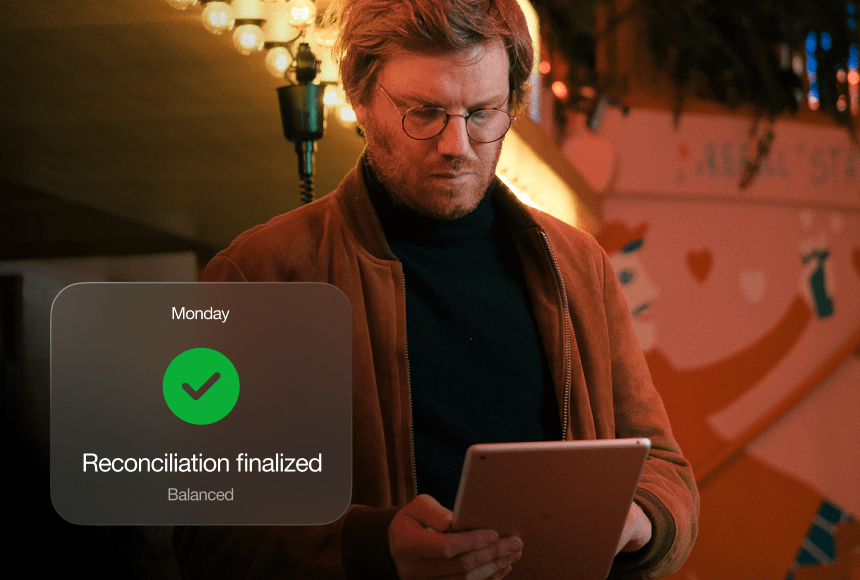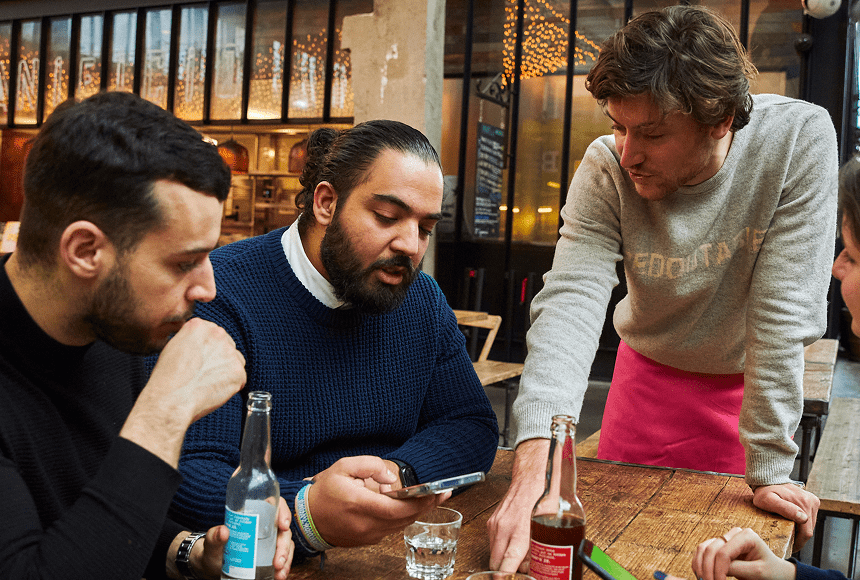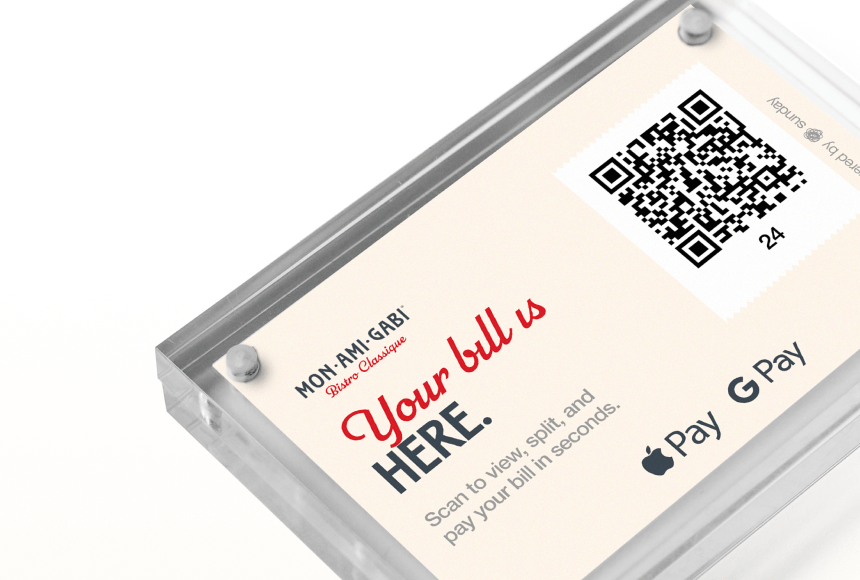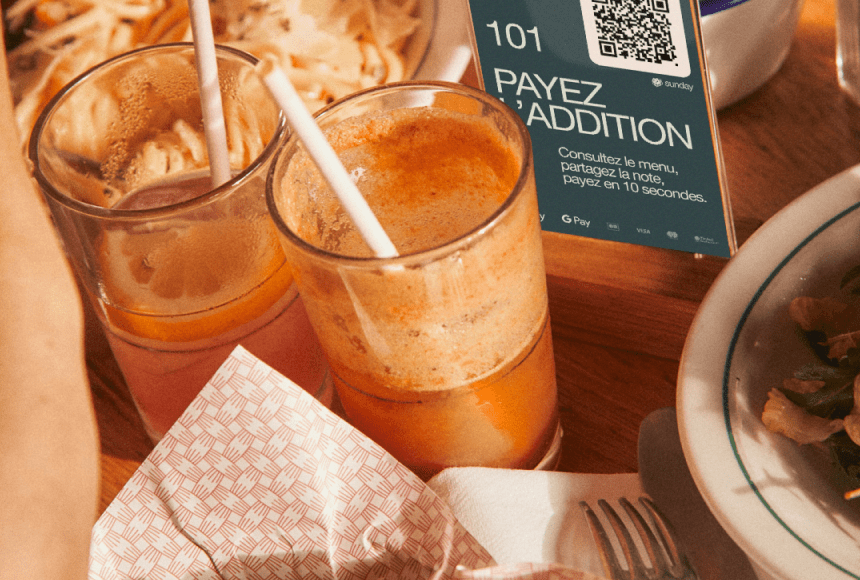
Speed Up Service and Boost Profit with Next-Level Payment Options
Why Table Turnover Matters
Picture this: It’s Friday night, your restaurant is bustling with activity, and you have a waitlist full of eager guests. In these circumstances, every extra minute a table sits idle can cost real revenue and risk frustrating your hungry clientele. Table turnover—the speed at which one table finishes their meal and is ready for the next occupants—is among the most critical metrics for a thriving restaurant.
The faster you can seat new patrons (without compromising service quality), the more revenue you’ll generate. It’s a balancing act between hospitality and business savvy. On the one hand, diners expect an unhurried and enjoyable experience; on the other, you have bills to pay, staff to compensate, and tight profit margins to manage. According to the National Restaurant Association (source), profitability often comes down to efficiency, which includes how quickly you can clear tables and seat the next party.
Streamlining table turnover isn’t about rushing guests out the door—it’s about removing friction at pivotal moments. One of the biggest “friction points” in most sit-down restaurants is the checkout stage. Think of all the micro-delays: the back-and-forth between the server and the table with the check; the signature step for a credit card; the wait for the card reader to be free; and so on. It may sound like only a few minutes per table, but multiply those minutes by dozens of tables each night, and you’ll see why optimizing the payment step can significantly bolster your restaurant’s bottom line.
Understanding the Modern Payment Journey
Contactless and digital payment solutions have transformed how people settle the bill, particularly in the United States. Diners want to pay quickly, tip seamlessly, and exit without waiting for a pen and paper. Meanwhile, busy servers rarely have the time to trot back and forth with receipts, handle exact change, and juggle multiple tables simultaneously. This is where smart checkout solutions come in, often using QR codes on the table or a lightweight payment terminal that enhances efficiency.
Driven by technological advancements and changing consumer habits, guests increasingly expect convenience:
- QR code menu browsing on mobile devices
- Instant payment with a simple scan
- One-click tipping and rating
- Zero time spent waiting for the server to arrive with the check
When you integrate a smart checkout system, you significantly reduce the manual elements of the payment process. From a guest’s standpoint, they can finalize the bill on their smartphone. From your perspective, you free up your staff to focus on more urgent tasks, such as greeting arrivals, checking on currently seated customers, and delivering fresh drinks or dishes. This not only accelerates table turnover but also fosters a more positive guest experience, leading to better reviews and word-of-mouth recommendations.
Essential Features of a Smart Checkout System
Before you choose a payment solution, it’s wise to know which features genuinely matter. Otherwise, you could end up with something that looks flashy but doesn’t deliver real benefits for your restaurant. Below are some key elements to consider when evaluating a modern payment tool:
- Ease of Use: Guests shouldn’t need a detailed manual to pay. A clear, user-friendly interface that guides them to split bills, add tips, or apply discount codes encourages smooth transactions.
- Contactless Options: Especially in the wake of growing demand for hygienic solutions, near-field communication (NFC) or QR code scanning has become a must. Your solution should let customers settle up without ever handing over a credit card.
- Customizable Settings: Each restaurant is different. A localized payment system can handle taxes, multi-level gratuities, or even limited-time promos. Look for a solution that adapts to your needs, not the other way around.
- Instant Receipt Generation: A digital checkout process should include immediate receipts emailed or texted to the diner, eliminating the need for printing paper slips. This is both eco-friendly and time-saving.
- Seamless Tipping and Reviews: When diners can choose their own tip amount quickly—and even leave a Google review on the spot—you’ll see a direct impact on your online reputation and staff morale.
- Data Insights: Customer data, order patterns, peak hours—these are invaluable pieces of information. A well-rounded solution should provide metrics you can act on, from how many checks were paid contactless to the average dwell time per table.
Many smart checkout platforms, including services like sunday, offer these features in a straightforward package. The promise is to free up staff and bolster revenue by streamlining the final step of the dining experience.
Improving Efficiency and Guest Satisfaction
When diners feel valued and attended to, they’re happier to return. At the same time, your staff also benefits from a more efficient workflow. Here’s a common scenario: during peak rush hours, a server has to balance greeting new tables, checking in with existing tables, updating the kitchen on orders, and providing checks to departing diners. Any snag in that timeline creates a bottleneck, often at the exact moment a table is ready to leave.
With a smart checkout solution, it’s as if you’ve hired an extra team member responsible solely for finalizing payments—a “virtual cashier,” if you will. This system can do the following:
- Prevent Payment Pileups: Multiple tables can pay at once without tying up the server or a physical terminal.
- Encourage Healthy Turnover: Freed from the waiting game, tables vacate naturally once diners finish their meals.
- Streamline Reorders: If a table decides on an extra appetizer or dessert, the platform can sometimes handle those add-on requests more quickly.
- Collect Feedback in Real Time: Satisfied diners have the option to add a positive note or rating instantly. Dissatisfied ones can also share feedback privately, helping you address issues before they reach public review sites.
When efficiency meets genuine hospitality, the payoff is dual-sided: faster turnovers and happier guests. A comfortable atmosphere with minimal hassles builds a loyal base, and that loyalty turns into repeat business and great referrals.
A Real-World Example: The Cozy Bistro
Let’s look at a fictional venue called The Cozy Bistro—an intimate 60-seat restaurant known for its homemade sauces and locally sourced vegetables, but suffering from a classic problem: slow turnover on busy nights. Their dishes are top-notch, but it can take up to 20 minutes just to finalize the bill at peak times.
The owner, Rachel, notices that her weekend lines are out the door. She invests in a smart checkout solution, installing small placards with QR codes at every table. Her servers are trained to mention the new payment method at the beginning of the meal, so diners expect a self-serve option by the time they finish dessert.
Almost immediately, guests start paying faster. Rachel notices:
- Average Turnover Time: Drops by nearly 10 minutes per table.
- Staff Satisfaction: Improved because servers no longer make several extra trips back to each table for payment. They can focus on refilling drinks, answering menu questions, and guiding new arrivals.
- Tip Increase: Digital tipping prompts guests with suggested percentages, making it more convenient to leave a generous tip. Rachel’s servers consistently report higher tip amounts on digital transactions.
- Positive Reviews: Because the checkout is streamlined, guests leave feeling positive and are more inclined to share that positivity on Google.
With this system in place, The Cozy Bistro maximizes its number of seatings every night—particularly crucial during peak hours. And because the bistro staff can focus more on hospitality than administrative tasks, they maintain a friendly environment that keeps regulars coming back.
Putting Smart Checkout Solutions to Work
It’s one thing to know why a digital payment platform works, but how do you integrate it smoothly? Consider these steps to give your staff and customers the best possible experience:
- Identify Pain Points: Determine where your checkout process currently lags. Is your POS terminal located in one corner of the dining room, forcing servers to walk back and forth? Do multiple parties queue at the front desk just to split the bill? Recognizing the weak spots helps you target the solution effectively.
- Select the Right System: Not all digital platforms are created equal. Some emphasize speed, others focus on integration with existing loyalty programs, and still others excel with in-app marketing. Pick one that aligns with your restaurant’s identity and needs.
- Train Your Staff: Even the most intuitive system needs human advocates. Your servers and hosts must feel comfortable explaining the payment process and assisting diners who aren’t tech-savvy.
- Rearrange Your Workflow: Once your staff is freed from the old-fashioned payment rituals, figure out where best to reallocate their energy. Could they handle more tables without sacrificing service quality? Introduce new offerings like special desserts, tableside presentations, or personal greetings for returning guests.
- Monitor and Adjust: Analyze feedback from diners, examine daily or weekly check closure times, and see whether your new process reduces table wait times. Tweak accordingly if certain parts of the workflow still cause friction.
The transition isn’t guaranteed to be flawless on day one—some diners may still prefer to pay with a physical card. But as contactless payments become more prevalent, you’ll likely see an overall improvement in speed, tips, and even staff morale.
Smart Checkout Solutions at a Glance
Curious how a traditional checkout compares to a technology-driven approach? Here’s a quick snapshot of those differences:
| Payment Stage | Traditional Checkout | Smart Checkout |
|---|---|---|
| Handing Over the Bill | Server drops off the printed check. Guest waits to ask questions or split the bill. | A QR code or link is instantly available. Guests can browse final charges on their own device. |
| Collecting Payment | Guest inserts or swipes their card in a single terminal often shared by multiple servers. | Each diner can pay on their own phone or through a contactless payment terminal, no waiting line. |
| Tipping | Guest fills the tip amount on a paper receipt, which can feel awkward or rushed. | Seamless digital interface with suggested tip percentages. One tap, and done. |
| Final Receipt | Printed on paper. Might be misplaced or left behind. | Digital receipt delivered instantly via text or email, easy to store and track. |
This comparison helps illustrate the time and hassle savings that come from adopting a technology-first mindset. When your guests see how effortless the entire process can be, their final impression of your restaurant is that of convenience and efficiency.
Supporting Staff and Improving Guest Experience
Equipping your servers with smart checkout solutions is a kind of investment in your frontline workforce. During peak hours, the staff experiences less stress because they’re not juggling credit card slips and waiting for terminals. Instead, they can focus on what really matters: engaging conversation, menu recommendations, and overall dining ambience.
On the diner’s side, the checkout becomes less of a chore. Guests can stay immersed in conversation until the very end of the meal, scanning a QR code when they’re ready, and leaving a gracious tip in one or two taps. Whether it’s a casual burger joint or a fine-dining establishment, the principle is the same: convenience fosters good will, encouraging diners to leave positive feedback and come back for their next meal.
Leveraging Data for Tailored Service
When you track transactions through a digital platform, you amass valuable insights. These can reveal, for instance, that a certain dish is underperforming, or that your brunch crowd typically leaves smaller tips compared to dinner guests. No guesswork—just solid data that can guide your decisions.
Consider how you could tailor your menu or specialized offers when you know your restaurant’s precise traffic patterns and peak times:
- Launch a limited-time promo on slow nights to draw in more diners.
- Adjust staff scheduling to match traffic flow, ensuring you’re never over- or understaffed.
- Refine your menu offerings based on real-time feedback and purchasing patterns.
Several payment solutions, including sunday and other reputable platforms, incorporate analytics that help you visually map these trends. The more you understand your customers’ behaviors, the better your chances of keeping your tables turning and your dining room full.
Making the Change Without Disrupting Service
Worried that a new checkout system will confuse your regulars? The trick is to seamlessly introduce the platform and keep guests informed. Here are some tips:
- Promote Early: Mention your upcoming digital payment upgrade on social media or via a short note on the bottom of receipts a few weeks before the rollout. This primes customers to expect changes.
- Signage on Tables: Place a small, friendly sign at each table: “Use our new QR code checkout for a faster, simpler experience!” That way, guests aren’t taken by surprise.
- Staff as Champions: Train servers to highlight the benefits: “Feel free to settle up anytime you like—just scan the QR code at your convenience. And no rush, stay as long as you’re comfortable.”
- Gradual Transition: Offer both options (traditional and digital) for a short transitional period. Some guests will jump at the chance to go contactless, while others might prefer to see how it works the first time around.
In most cases, customers adapt quickly—especially when they see how much simpler the payment experience has become. That immediate “wow” factor often spreads through word-of-mouth, driving more traffic to your business.
Final Reflections: Maximizing Your Gains
Bringing your checkout process into the modern era helps you do more than simply turn tables faster. It’s a two-way street of improvement: customers get a convenient, intuitive payment experience, and you gain a valuable tool to streamline operations and differentiate your restaurant. By removing the friction typically associated with the payment stage, you give diners a positive final impression—impacting how they describe your business to others.
Additionally, fostering a smooth table turnover ensures you can serve more guests, more often, without losing the personal touch that regulars love. When your team has more availability to engage with diners, recommend menu items, and deliver high-quality service, customers tend to linger for the right reasons (great conversations, perfectly paced courses) and then leave promptly when they’re ready. The entire process has a natural flow that boosts your brand’s reputation and your bottom line.
If you’re ready to reduce hassle, elevate the guest experience, and ultimately run a more profitable operation, investing in a smart checkout solution can be a game-changer. With well-planned implementation, training, and follow-up analytics, you’ll quickly see how transforming a single aspect of your service can amplify success across your entire restaurant.
Frequently Asked Questions
FAQ
1. Will guests actually use a smartphone-based checkout?
Many diners have grown accustomed to using their phones for everything from ordering groceries to ride-sharing. A well-communicated and user-friendly checkout option typically sees strong adoption rates, especially if your servers introduce it clearly.
2. How does a smart checkout solution handle split bills?
Most platforms allow multiple payment methods on a single check, so individual diners can choose which portion they’ll cover. This eliminates the hassle of calculating each share manually or splitting at the register.
3. Does this approach work for quick-service restaurants?
It can. While quick-service restaurants often already have a fast payment process, adding contactless and smartphone-based options may further reduce wait times. Customers will appreciate the convenience and safety of scanning a code and settling their check within seconds.
4. What if there is a connectivity issue?
It’s wise to have a backup plan—such as a standard card reader—for the rare cases when your internet connection falters. Most smart checkout solutions also provide offline modes or can switch to cellular data to avoid disrupting service.
5. How do I track tips with a digital payment system?
The tips are recorded and processed automatically, and some platforms even allow you to set suggested tip amounts. This makes tip distribution straightforward at the end of each shift, and detailed reports help you stay on top of your team’s earnings.
Find out more today
Drop us your details below and we’ll reach out within the next 24h
Get the full, detailed picture.
sunday elevates your business with insightful data, instant feedback and precise analytics.




